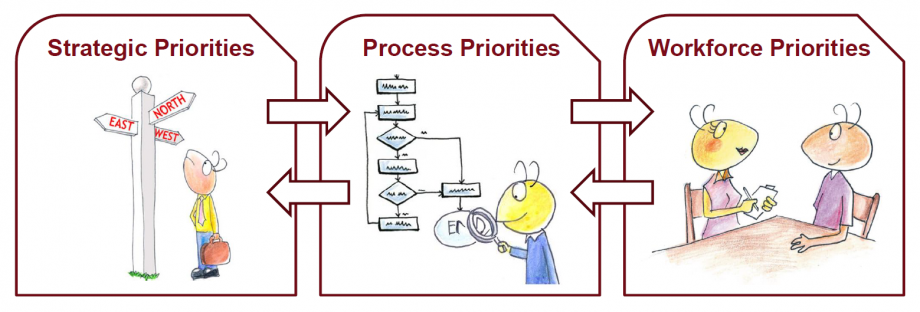Strategic workforce planning is the process of matching workforce demand and supply over a foreseeable time period. Organisations conduct workforce planning that builds upon quantitative activities such as headcount planning and workforce analytics, and use these data as part of qualitative decisions to support and implement organisational strategies.

You Cannot Plan Workforce For Activities You Do Not Understand
Following our experience, there is always a process. A sequence of tasks forms a process that determines the type of competencies and profile of workforce needed. If these tasks cannot be listed, workforce planning is an illusion. We cannot plan something that we do not understand.
If you don’t know the tasks you want to plan workforce for, your workforce planning is at the mercy of chance!
Strategic Priorities
Expecting the Unexpected
Workforce planning for a stable business that produces the same kind of product or service year over year with a certain annual increase in volume is a no-brainer. In this kind of company, customer and employee satisfaction is constantly under the radar in order to detect needs for potential adjustments in the workforce, antennas are out to see what the competition does and market research knows exactly what comes next. Unfortunately, this kind of organisation does not exist very often.
Planning With What If’s
Focussing on Core Competency
Process Priorities
Workforce Planning for Transactional Activities

Workforce Planning for Non-Transactional Activities

Finding The Pattern is Key
Benchmarking
Workforce Priorities
Resourcing Strategies
One Government At Work
Resourcing Strategy: Build
Resourcing Strategy: Borrow
Smart workforce planning for a large conglomerate of companies or the said government would include synchronising projects. The aim is to spread out the workforce need nicely and balanced. This would reflect a macro perspective on a very powerful Lean approach: flexible workforce.
Resourcing Strategy: Buy
A flexible recruitment strategy helps meeting varying workforce needs.

Flexible Workforce

Job Redesign
- “How will we be doing this job in some years’ time?”
- “What kind of workforce would we need by then to complete this job with best results?”
- “What kind of competencies would we need by then to accomplish this?”

